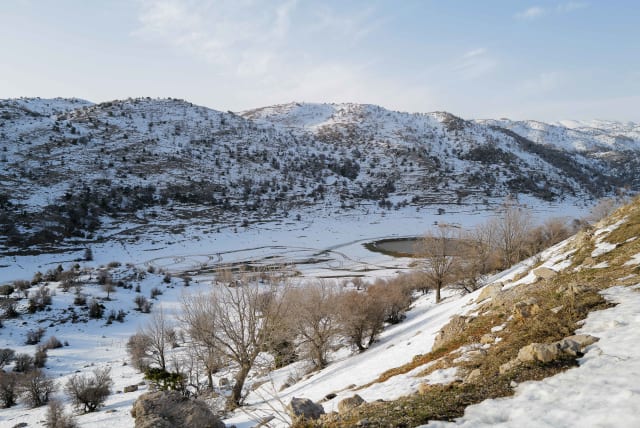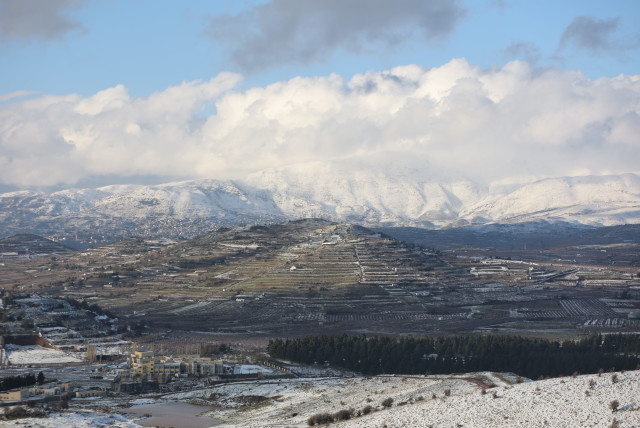Will Israel's April showers really bring May flowers?

Saturday night saw Mount Hermon covered with several centimeters of snow with the temperature dropping below zero celcius.
Winter has not yet left Israel and the complicated weather continues to deceive Israelis. Those who rushed to store their winter clothes and umbrellas in their closets had to take them out again recently.
After warm and clear days, it snowed on the Hermon on Saturday, while at the same time, it rained for periods in the north of the country. Rain also poured in the central regions of the country.
The cool weather is expected to continue on Sunday, and it will be partly cloudy to cloudy. Local rain is still expected in the north of the country, mostly light. It may drizzle in the center of the country, and temperatures will be lower than usual for the season.
The temperature in Tel Aviv will reach 20 Celsius, in Jerusalem - 16, Haifa - 19, Tiberias - 24, Safed - 14, Beersheba - 21 and in Eilat - 27.
Temperatures are expected to increase on Monday, mainly in the mountains and in the interior of the country, but they will still be lower than normal for the season.
Tuesday will see temperatures increase even more but they will only be slightly lower than usual until the afternoon.
It will not be until Wednesday that the temperatures will be considered normal for the season in most regions of the country.
First reports of the recent weather in the north
The Hermon website reported on Sunday that following the rare snowfall during the morning hours from an altitude of about 1,800 meters, the site was covered with a white blanket of several centimeters of snow and the temperature dropped below zero degrees Celsius. At the same time, there were strong gusts of wind blowing and heavy fog.
A resident who lives in the kibbutz Alon HaGalil in northern Israel said that "the feeling was that we were in the month of January" regarding the much cooler temperatures. Friday night saw reports of rainfall in multiple locations in northern Israel including Nahariya, the Upper Galilee and Kibbutz Ein Gev. There was also heavy rainfall in the Gush Dan area.
The Environment and Climate Change portal is produced in cooperation with the Goldman Sonnenfeldt School of Sustainability and Climate Change at Ben-Gurion University of the Negev. The Jerusalem Post maintains all editorial decisions related to the content.
Jerusalem Post Store
`; document.getElementById("linkPremium").innerHTML = cont; var divWithLink = document.getElementById("premium-link"); if (divWithLink !== null && divWithLink !== 'undefined') { divWithLink.style.border = "solid 1px #cb0f3e"; divWithLink.style.textAlign = "center"; divWithLink.style.marginBottom = "15px"; divWithLink.style.marginTop = "15px"; divWithLink.style.width = "100%"; divWithLink.style.backgroundColor = "#122952"; divWithLink.style.color = "#ffffff"; divWithLink.style.lineHeight = "1.5"; } } (function (v, i) { });

